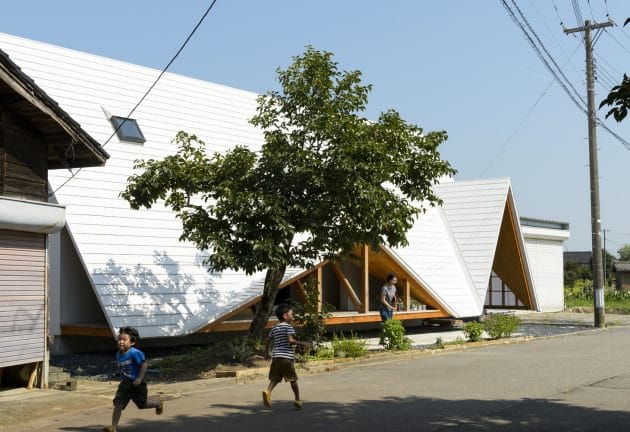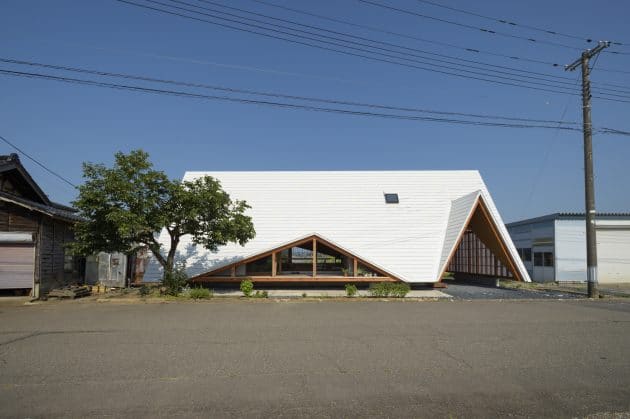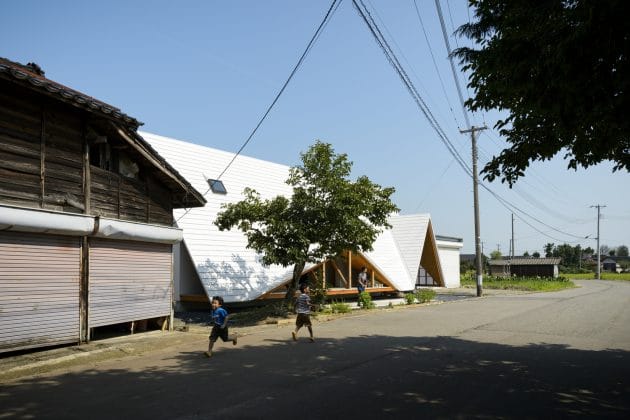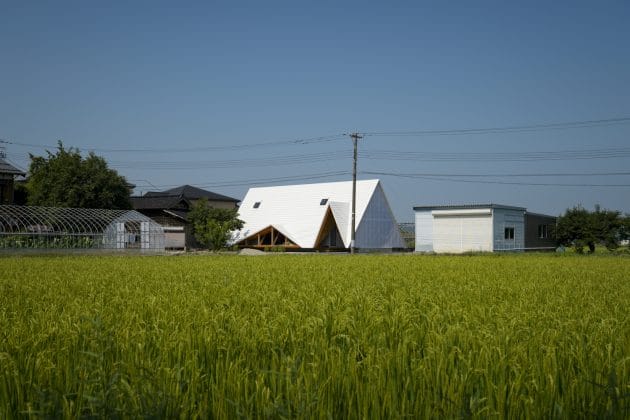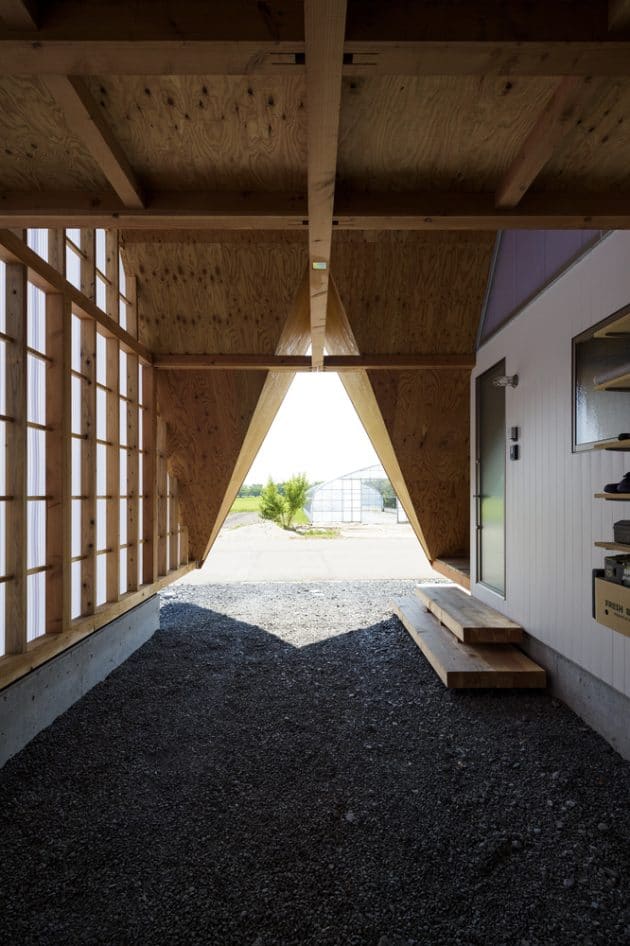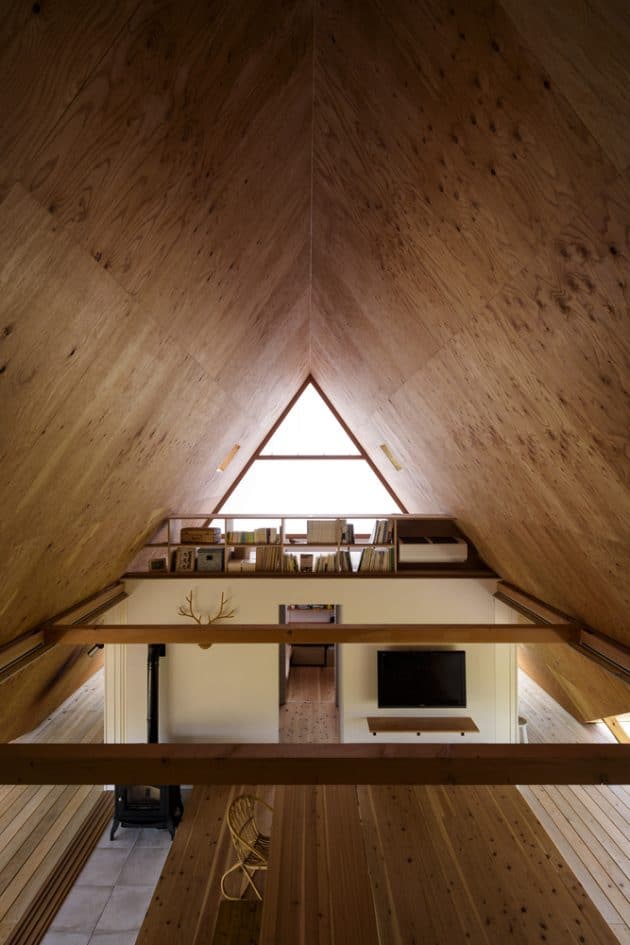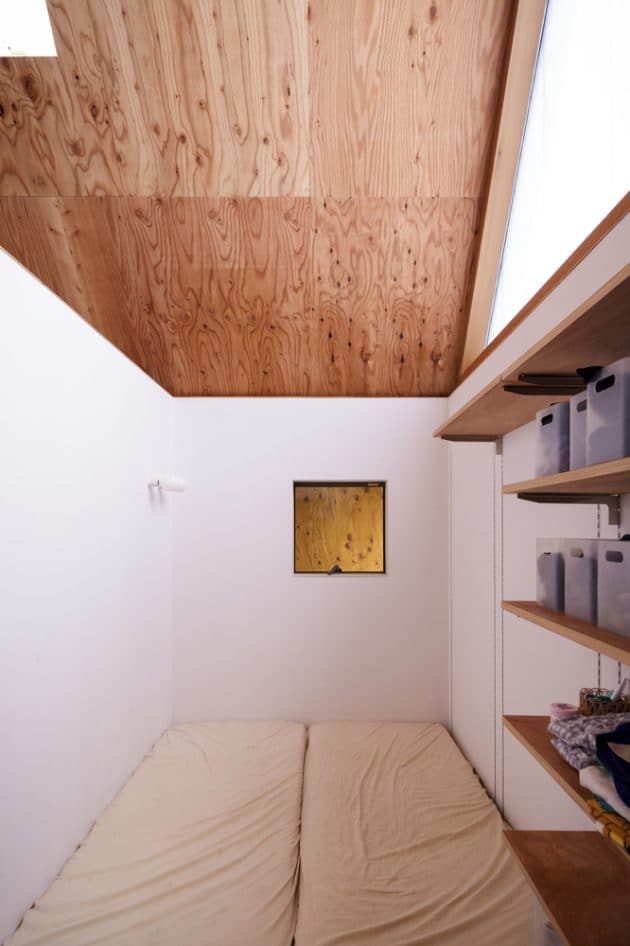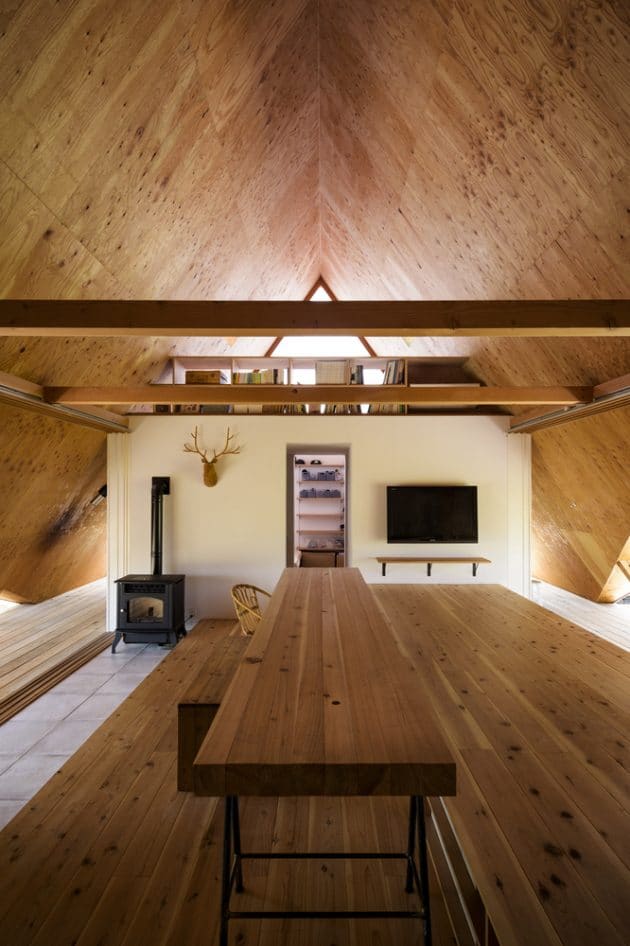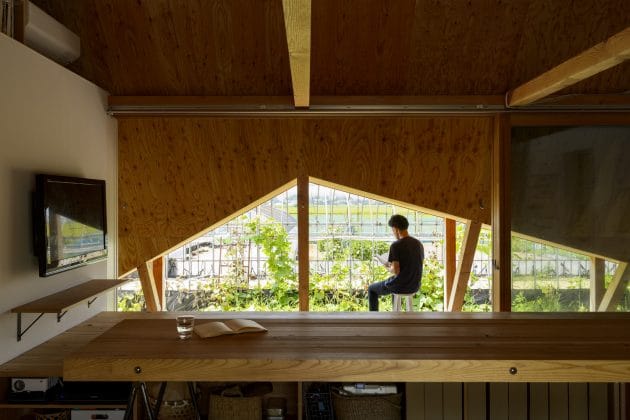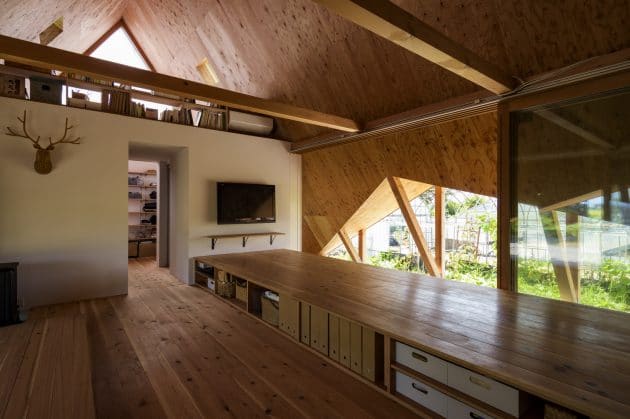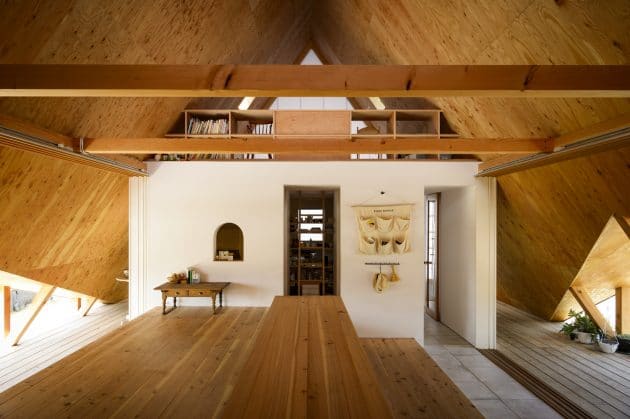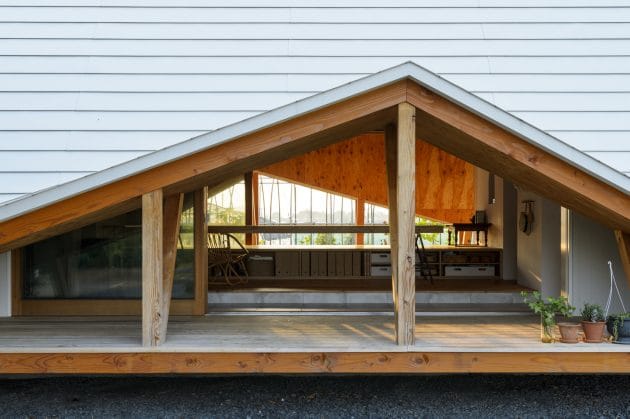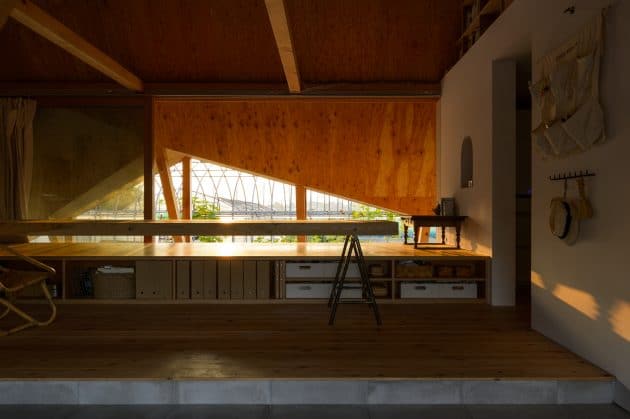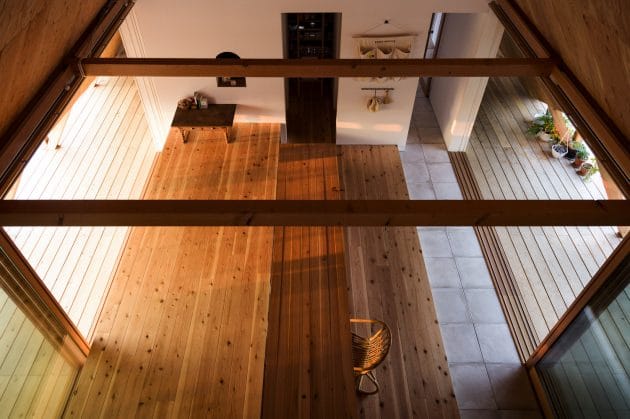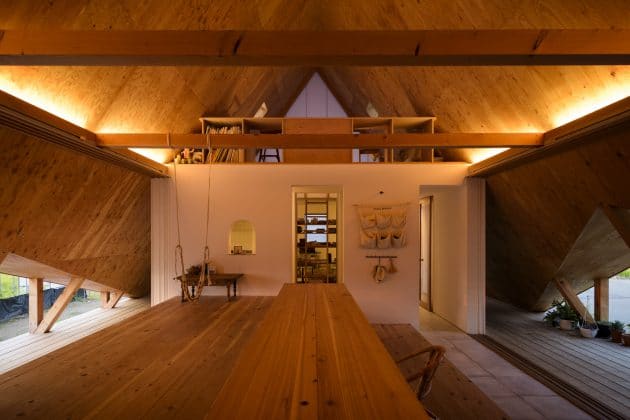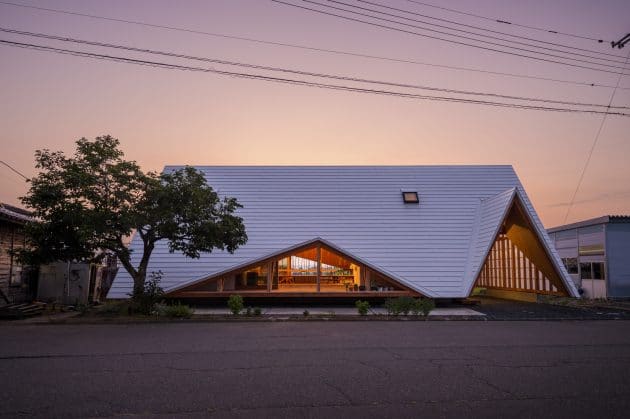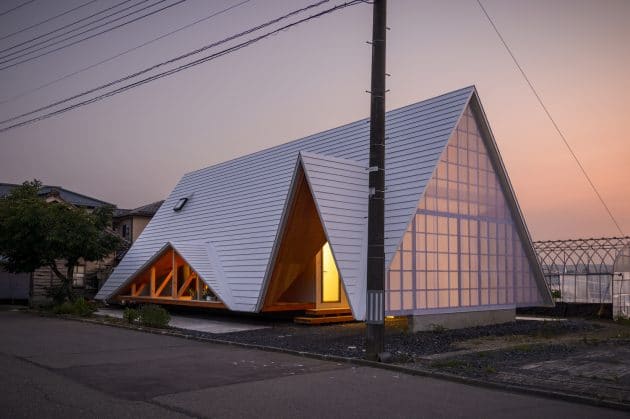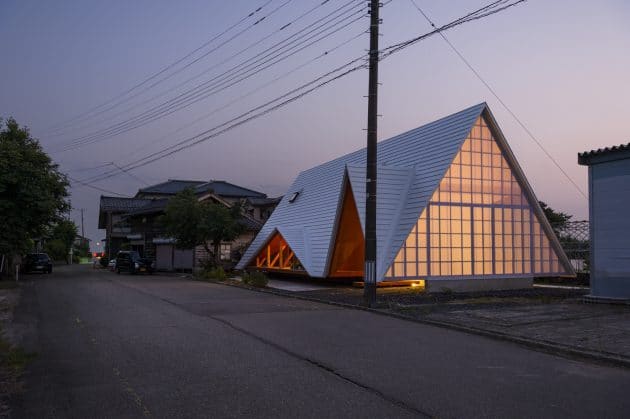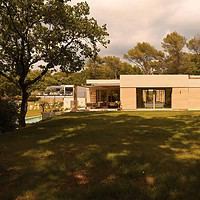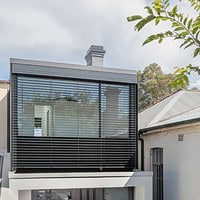Project: Hara House
Architects: Takeru Shoji Architects
Location: Nagaoka, Japan
Area: 1,786 sf
Photographs by: Isamu Murai
Hara House by Takeru Shoji Architects
Takeru Shoji Architects have designed the Hara House in the rural area of Nagaoka City in the Niigata Prefecture of Japan. Immediately noticeable, the Hara House takes on the shape of a tent, except that it is built from a wooden truss structure, surrounded by a lush, green field, a work shed, garage and a farmhouse. The new residence has a strong connection to each of the entities surrounding it.
Hara house is located in the agricultural village in Nagaoka city, Niigata prefecture. Giving consideration to the functions onsite, such as parents’ house, storage areas, and private rooms; most functions that are required in a fully self-reliant house were already present on site. Our design direction was to create a building that revitalizes the structures already present on site and have the potential to adapt to new functions as the need or mood arises. We started our design by conceptualizing a small building as an ‘incomplete’ remote extension of the main house. The building is not fully self-sufficient and thus draws from its setting and relies on the surrounding buildings to fully function and even engages the village to create a thriving community.
The building emulates its surrounding, which has many vinyl houses and work sheds, and uses 120mm square timber members, to create a simple series of ‘A frame’ trusses. This structure creates an image of a large tent; a stiff yet giving structure which assimilates all the human behaviors. Storage, partitions and private rooms have been removed, as much as possible, to simulate one large open space that adapts to the user’s needs. In this situation, one cannot help but rely on the support of the other buildings around it, thus jutting out of the building envelope and promoting the use of the existing architecture.
The aim was to create a way of life that is never complete within just this one structure, it is a piece of the greater architecture; a house that is part of a group of buildings. This vacuum in function encourages the users to invent creative ways to utilize the space; it encourages the ‘use’ of the building rather than just being a house you ‘enter’. This ‘house of incompleteness’ is envisioned to become a ‘strong absorber’, as the blank space invites people and events of the village to utilize it; thus the house becomes part of the greater architecture of the village. By establishing this type of architecture, with its insufficiency and blank space, a building is born that establishes itself in the village as an attraction of interest and activity.
This singular building crosses its threshold to interact beyond, just the family, to the village and slowly dissolves boundaries and creates the possibility of forming new connections and beginning the creation of a new, strong-knit community. When thinking about such possibilities in the distant future, thoughts arise about how to design a connection that ties the future, its surrounding buildings, the agricultural community and the village as a whole.
Thus, Hara house, as a simple ‘series of truss frames’, aims to connect all these entities, by being part of the collective form of the village. It reinforces old and creates new connections with its surrounding buildings and community. Hara house is a proposal of a ‘small house’ that shows a new ‘management system of a village’; a way to revitalize villages that were formerly a collection of strong interconnections.
